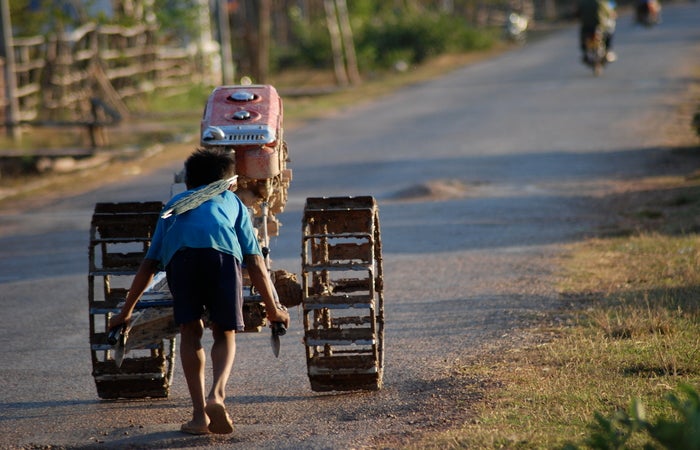Program Goals
 The FXB Center launched its Human Trafficking and Forced Labor Program in 2012 with the conviction that more effective and sustainable anti-trafficking strategies are critical to address the scourge of human trafficking worldwide. Under the leadership of Jacqueline Bhabha, FXB Director of Research, the program aims to provide the anti-trafficking community with cutting-edge research, advocacy, and training for the next generation of leaders in the field.
The FXB Center launched its Human Trafficking and Forced Labor Program in 2012 with the conviction that more effective and sustainable anti-trafficking strategies are critical to address the scourge of human trafficking worldwide. Under the leadership of Jacqueline Bhabha, FXB Director of Research, the program aims to provide the anti-trafficking community with cutting-edge research, advocacy, and training for the next generation of leaders in the field.
Research and Advocacy
The Human Trafficking and Forced Labor Program seeks to prevent and intervene against human trafficking globally and in the United States. In collaboration with partners in the anti-trafficking community, the program conducts thorough analyses of the root causes of and vulnerabilities to trafficking, with a particular focus on children and young people trapped in abusive circumstances. By leveraging an innovative quantitative and qualitative approach, as well as FXB methodologies, the program endeavors to document human trafficking methodically and reliably to provide key policymakers and advocates with a powerful evidence base that can strengthen their work and inform effective policy responses.
The domestic component of the human trafficking program, provisionally targeting the cities of San Francisco, Oakland, Cambridge, and New York, will conduct research focused on first responders to trafficking victims, as well as a series of case studies of best practices in preventing and intervening in trafficking. Internationally, the program will focus on analyzing child labor in the supply chains of several global commodities, including hand-woven carpets from India and minerals mined in the Democratic Republic of Congo (DRC). The program aims to increase awareness in western retail markets and provoke effective corporate responses. In addition, the program will focus on the precipitators of vulnerability to trafficking among adolescents in the United States, on the Nepal-India border, and disenfranchised Roma youth in Europe.
Capacity Building
The program is also establishing a training institute geared toward developing a cadre of anti-trafficking leaders. The institute will offer targeted trainings to students and professionals in the field – including community and NGO leaders, police, lawyers, social workers, doctors, and teachers – to build skills and facilitate effective, ethical, and culturally appropriate action to combat human trafficking.
Additional Research Topics
Additional research topics include:
- Test-bed programs and measurement of anti-trafficking initiatives – A key component of all research will be the continual testing of initiatives and recommendations that arise from the Program’s research, or from external partners such as the UN, the U.S. State Department, or key NGOs. This activity will provide a basis around which to design broader anti-trafficking efforts, or to curtail those policies that prove less effective. Mechanisms for raising awareness and building a larger community through social media and web-based tools will also be explored.
- Analyzing key commodities with slave labor in supply chains – Several global commodities and products (minerals, gold, agriculture, fish and shrimp, cotton, palm oil, tea and coffee, cocoa, etc.) that are sold in the U.S. and EU contain slave or child labor exploitation at early stages in their supply chains; reliably documenting the size and scale of these abuses is vital towards catalyzing an effective corporate social responsibility response, as well as consumer awareness campaigns.
- Measurement tools to analyze the efficacy of anti-trafficking programs – Measuring the efficacy of various tactics to combat human trafficking is increasingly important to the field; the program will place ongoing focus on dedicated research projects that identify common tactical interventions and measure their efficacy.
- Linkages between human trafficking and other forms of contemporary slavery – In order to generate more effective interventions, it is important to understand the relationships between human trafficking and other forms of contemporary slavery, such as bonded labor and child labor. It is also critical to remain intellectually nimble as traffickers and exploiters evolve and source new pools of potential slave labor.
- Country-specific data gathering on human trafficking – Two countries have engaged Siddharth Kara to establish baseline metrics, data, and other information on the scale, scope, and functioning of human trafficking within and across their borders. Analogous efforts will be pursued in several other countries.
Photo: Angela Duger/Harvard FXB

